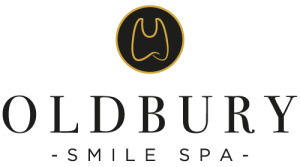Dental Terminology
Aesthetics and Restorative Dentistry
Dental crown: A tooth-shaped cap placed over a damaged tooth to restore its appearance and functionality.
Dental filling: A restorative material used to repair a decayed or damaged tooth.
Dental implant: A titanium post surgically placed in the jawbone to support a dental crown or bridge.
Dental veneers: Thin shells made of porcelain or composite resin bonded to the front surface of teeth to improve their appearance.
Teeth whitening: The process of lightening the colour of teeth to remove stains and discolouration.
Dental bonding/composite bonding: A procedure that uses tooth-coloured composite resin to improve the appearance of teeth by filling in gaps, repairing chips, or covering stains.
Dental contouring: Also known as tooth reshaping, it involves removing small amounts of tooth enamel to modify the shape, length, or surface of a tooth.
Dental inlay: A custom-made restoration that fits into the prepared cavity of a tooth to restore its shape, function, and aesthetics.
Dental onlay: Similar to an inlay, an onlay is a larger restoration that covers one or more cusps of a tooth, providing more extensive coverage and support.
Dental bridge: A fixed prosthesis used to replace one or more missing teeth by anchoring artificial teeth to adjacent natural teeth or dental implants.
Dental crown lengthening: A surgical procedure that removes gum tissue or bone to expose more of the tooth’s structure, often performed before placing a dental crown.
Full mouth reconstruction: A comprehensive treatment plan involving multiple restorative and cosmetic dental procedures to restore the entire mouth’s function and aesthetics.
Invisalign: A system of clear, removable aligners used to straighten teeth without the need for traditional braces.
Dental prosthesis: An artificial device used to replace missing teeth, such as dentures, dental bridges, or dental implants.
Occlusion: The alignment and contact between the upper and lower teeth when the jaws come together.
Overdenture: A removable dental prosthesis that rests on dental implants or natural tooth roots for support and stability.
Smile makeover: A customised combination of cosmetic dental procedures to enhance the appearance of a person’s smile, considering factors like tooth colour, alignment, and overall aesthetics.
Temporomandibular joint (TMJ) disorder: A condition characterised by pain, discomfort, or dysfunction of the temporomandibular joints and surrounding structures, affecting jaw movement and facial muscles.
Tooth recontouring: The process of reshaping and smoothing tooth enamel to improve the tooth’s appearance, often used to correct minor imperfections or irregularities.
Gum Health and Periodontics:
Gingivitis: Inflammation of the gums, often caused by plaque buildup.
Periodontal disease: A chronic bacterial infection that affects the gums and supporting structures of teeth.
Periodontist: A dental specialist who focuses on the prevention, diagnosis, and treatment of periodontal disease.
Scaling and root planing: A deep cleaning procedure to remove plaque and tartar from below the gum line and smooth the tooth roots.
Gum recession: The exposure of tooth roots due to the loss of gum tissue, often caused by periodontal disease.
Orthodontics and Teeth Alignment:
Braces: Orthodontic appliances used to correct misaligned teeth and jaws.
Malocclusion: A misalignment of the upper and lower teeth, often leading to bite problems.
Orthodontist: A dental specialist who diagnoses and treats teeth and jaw alignment issues.
Retainer: A removable or fixed appliance worn after orthodontic treatment to maintain teeth alignment.
Overbite: When the upper front teeth excessively overlap the lower front teeth.
Oral Surgery and Extractions:
Dental extraction: The removal of a tooth from its socket.
Wisdom teeth: The third molars that often require extraction due to impaction or overcrowding.
Oral surgeon: A dental specialist who performs surgical procedures in the oral and maxillofacial area.
Dry socket: A painful condition that may occur after a tooth extraction when the blood clot is dislodged or dissolves prematurely.
Alveoplasty: A surgical procedure to reshape and smooth the jawbone after tooth extraction.
Preventive Dentistry and Oral Hygiene:
Dental hygiene: The practice of maintaining oral health through regular brushing, flossing, and professional cleanings.
Dental prophylaxis: A professional teeth cleaning procedure performed by a dental hygienist to remove plaque and tartar.
Fluoride treatment: The application of fluoride to teeth to strengthen enamel and prevent tooth decay.
Sealants: Thin plastic coatings are applied to the chewing surfaces of teeth to prevent cavities.
Oral hygiene instructions: Guidance provided by dental professionals on proper oral care techniques and habits.
Radiology and Diagnostic Imaging:
Dental X-rays: Radiographic images used to diagnose dental conditions not visible during a clinical examination.
Panoramic X-ray: A wide-view X-ray capturing the entire mouth, jaws, and teeth in a single image.
Bitewing X-rays: X-rays that show the upper and lower teeth biting together to detect cavities and assess bone level.
Cone beam computed tomography (CBCT): A three-dimensional X-ray imaging technique used for comprehensive dental evaluations.
Digital radiography: X-ray imaging using electronic sensors that provide instant images with lower radiation exposure.











